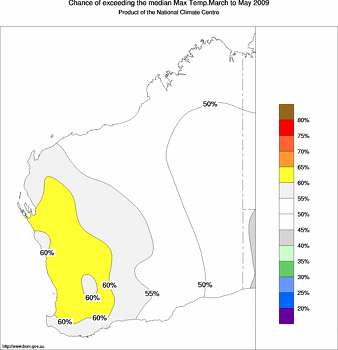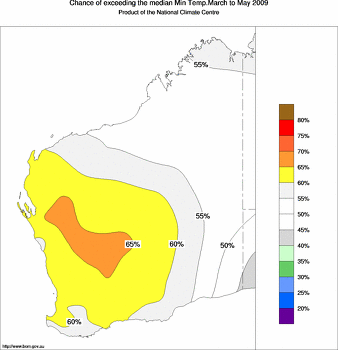|
The pattern of seasonal temperature odds across Australia is mostly a
result of warm conditions in the Indian Ocean in January.
The chance of exceeding the median maximum temperature during autumn
is around 60% in the west of WA. This means that for every ten years
with ocean patterns like the current, about six years are expected to
be warmer than average in these areas, while about four years are
expected to be cooler.
For the remainder of the state, the chances of warmer than average
daytime temperatures are between 45 and 60%, indicating roughly equal
chances of warmer or cooler than normal conditions.
Outlook confidence
is related to how consistently the Pacific and Indian Oceans affect
Australian temperatures. During autumn history shows the effect on
maximum temperatures to be weakly to very weakly consistent over much
of Western Australia. The effect is moderately consistent in the north
Kimberley and southwest corner of the state (see background information).
The chance of the average minimum temperature exceeding the median
during autumn is between 60 and 70% in western and central WA. This
means that for every ten years with ocean patterns like the current,
about six to seven years are expected to see warmer than average overnight
temperatures in these regions.
For most of the remainder of the state, the chances of warmer than
average overnight temperatures are between 45 and 60%, indicating
roughly equal chances of warmer or cooler than normal conditions.
History shows the oceans' effect on minimum temperatures during
autumn to be moderately consistent over most of WA.
| 










